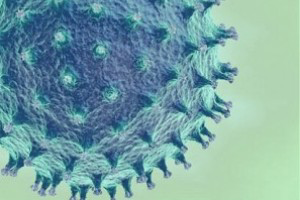New step towards eradication of H5N1 bird flu

A University of Adelaide-led project has developed a new test that can distinguish between birds that have been vaccinated against the H5N1 strain of avian influenza virus or “bird flu” with those that have been naturally infected.
This is a significant step in the fight against this often fatal strain of avian influenza which is widespread in the poultry populations of South East Asia, particularly Indonesia and Vietnam.
It causes global concern because of its possible transmission to humans and the threat of a pandemic if it mutates to a form that can be easily passed from bird to human then human to human. The research has been published in PLOS ONE.
“Avian flu is on the top list of notifiable diseases of the World Organization for Animal Health (OIE) because of its high economic cost and risk to human health,” says project leader Dr Farhid Hemmatzadeh, Senior Lecturer in Virology in the School of Animal and Veterinary Sciences at the Roseworthy campus.
“Outbreaks in birds are largely being controlled by vaccination and this is limiting human exposure to this virus.
“But the inability of distinguishing between vaccinated and naturally infected birds has been a major challenge. It has prevented tracking the virus which can still circulate in vaccinated birds and may mutate to new strains under what’s called vaccination pressure.
“These birds that have been vaccinated but still have live naturally infected H5N1 virus in their systems are the main source of emerging strains of the virus – and these new strains may be even more dangerous to birds or humans.
“With this new, more sensitive, test we can identify these vaccinated birds with live virus and prevent the escape of any mutant strains. This is essential if we want to prevent pandemics developing from this virus and eventually eradicate this disease.”
The researchers, including the University of Melbourne, CSIRO and Indonesian organisations, are carrying out large surveillance programs in poultry farms across Indonesia. The research is funded by the Australian Centre for International Agricultural Research (ACIAR).
The bird vaccine is made from avian influenza virus which has been killed but still promotes the production of antibodies in the bird protecting it against the live virus. The antibodies prevent the replication of the virus in the bird, but in some cases the virus mutates in a vaccinated bird and can still replicate even with the existing high level of antibodies to the vaccines.
The new DIVA test (differentiation of infected from vaccinated animals) uses a particular viral protein called Matrix protein 2 that reacts differently with blood serum from vaccinated or infected animals. Since the first outbreak of H5N1 avian influenza virus in 2004, the development of a reliable DIVA test has been global priority.
Source: University of Adelaide













